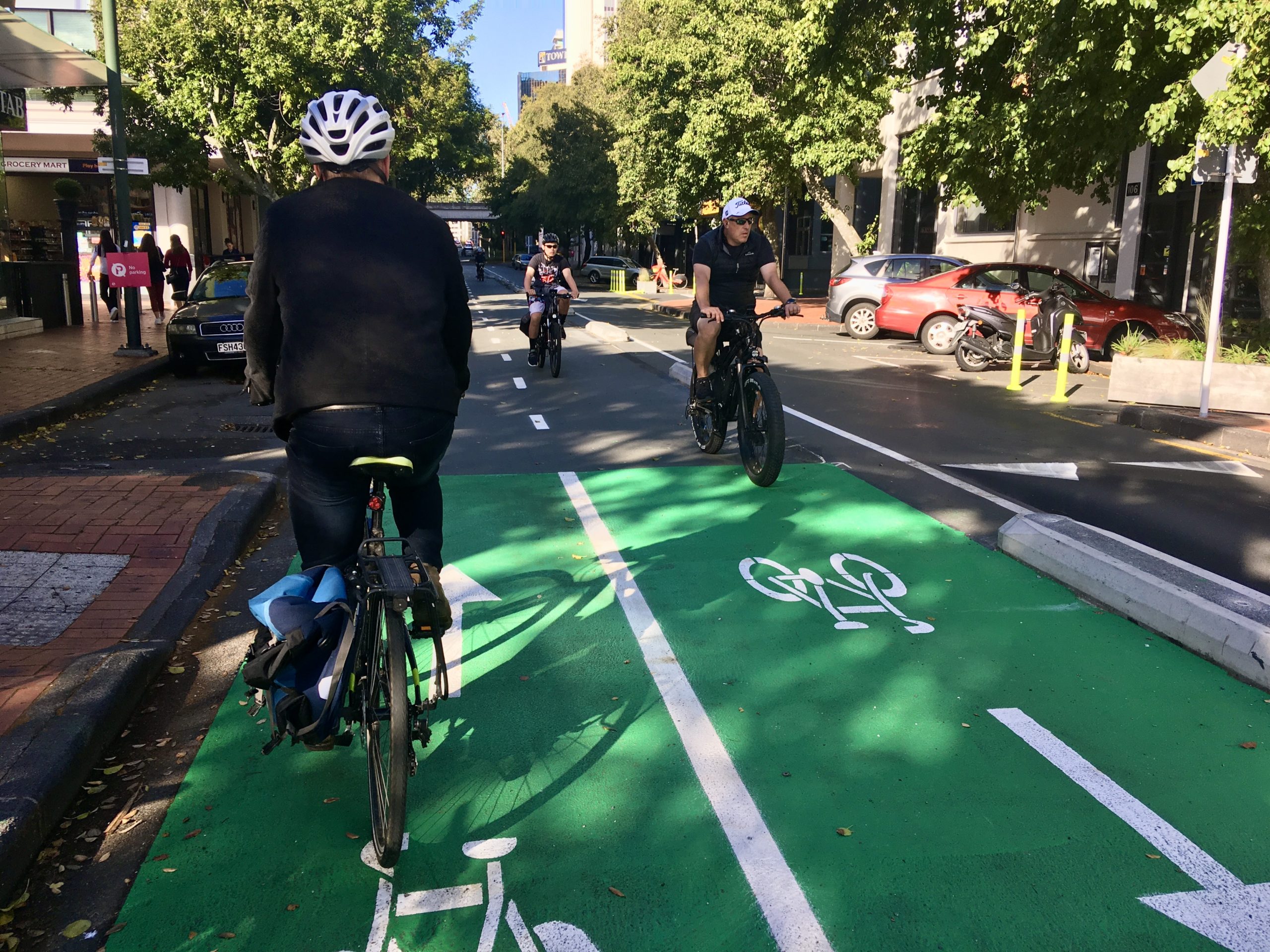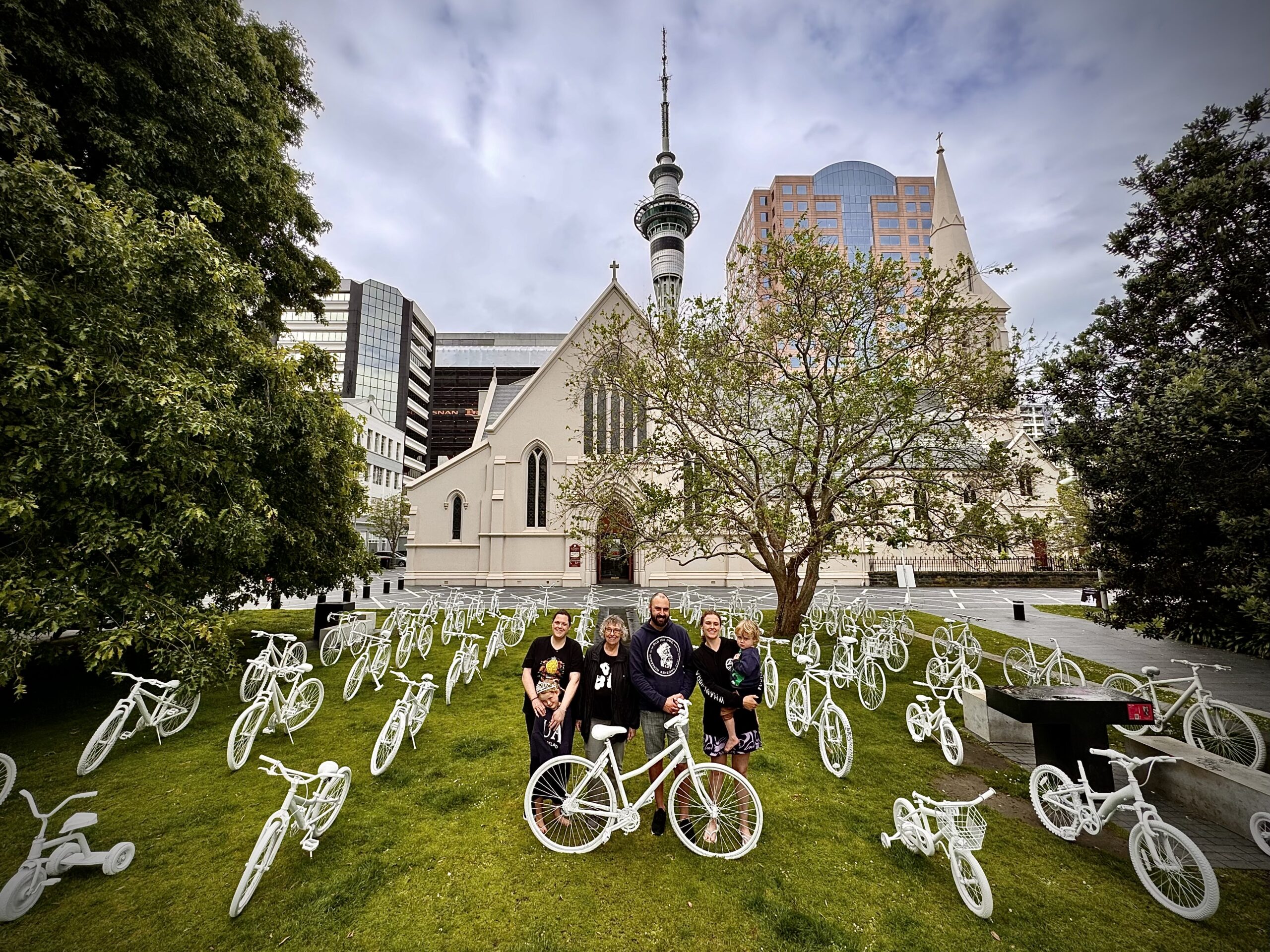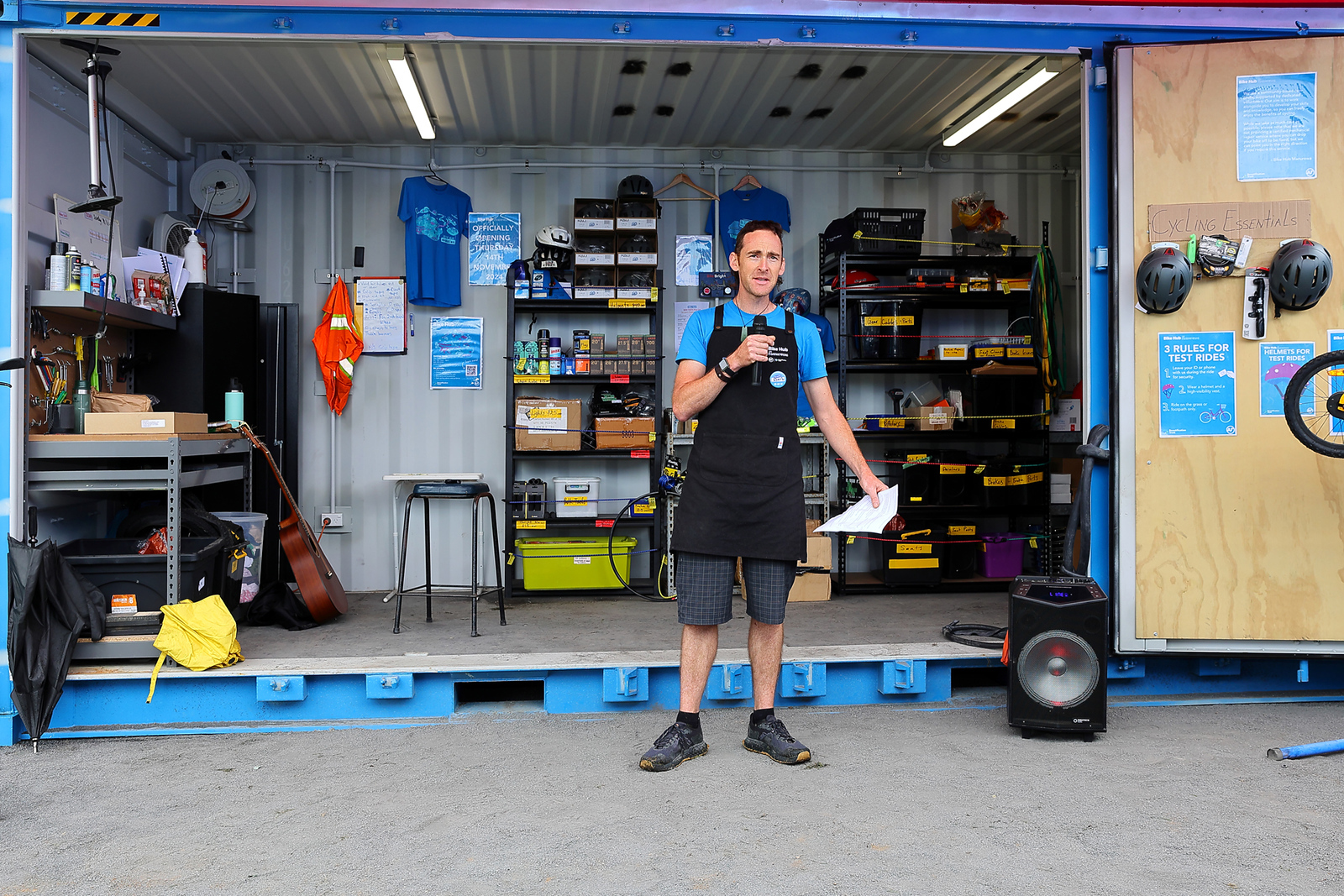Who would ever think we’d need magic to complete an everyday commuting cycleway? It’s not what usually springs to mind when we think of building the popular and functional cycleways we use most days to get around Tāmaki Makaurau Auckland by bike. Think of our busiest cycleway, the North Western Cycleway. Fantastic to have, but was it born of magic? Not really!
In reality all completed cycling projects rely on a dose of magic, serendipitous good luck to see the light of day, along with perseverance, timing, smart planning, and political goodwill. The Viaduct Cycleway, that short and highly useful final link in the City Centre Cycle Loop, was so elusive and slippery to pin down for delivery that I suspect magic was even more in evidence than usual. (Even if you’re not a believer in magic, maybe you’ll agree that finally closing a gap to create a connected cycleway brings a special aura to the project.)
The Viaduct Cycleway is the little pink stretch shown on this old Auckland Transport project map. It is from the golden pre-Covid era when cycling numbers were booming, recording streams of workers and students pedaling to work and study.
The City Centre Cycle Loop was one of Auckland’s first comprehensive cycleways, delivered over a period of years. Looking back now, it doesn’t seem so bad now when we reflect on the hazardous process that has stymied numerous other cycleway projects.
The City Centre Cycle Loop began in 2014 with the Grafton Gully cycleway built by Waka Kotahi (then NZTA) and the staged delivery of the Beach Rd cycleway by Auckland Transport (AT). The joint engagement of the two transport agencies was not ideal for a smooth and calm delivery, but progress was made in 2015 with Waka Kotahi’s opening of Te Ara I Whiti/ ‘The Pink Path’ on the former Nelson St motorway off-ramp in 2015 and the eventual opening of the Nelson St cycleway in 2017. Between these dates AT opened a temporary cycleway along the waterfront on Quay St in 2016.
The Nelson St cycleway was initially planned go all the way to Quay St and the waterfront, via Sturdee St, Market Place, Customs St West and Lower Nelson St. Despite strong public support for this waterfront connection when the project was consulted on, AT decided to ‘pause’ the Viaduct section in late 2017. This was important to serve the demand generated by the popularity of the Pink Path, but it sealed the fate of the Viaduct Cycleway to become victim of internal politics at AT and funding constraints.
We can at last report that 2023 brings permanent infrastructure to completion on the Viaduct Cycleway, closing the City Centre Cycle Loop. Bike Auckland celebrates this event, as we know how much it has been desired and how much work has been invested in this short safe cycling route.
We have Eke Panuku to thank for playing a critical role in early 2020 to change the fortunes of the Viaduct Cycleway, when it invited Bike Auckland to work with it on traffic management planning for the 2021 America’s Cup. Bike Auckland didn’t waste any time on asking for cycling improvements to allow commuting cyclists to avoid the shared path that served the bars and their patrons at the Viaduct Basin. We also promoted to Eke Panuku and AT that cycling had potential to cater for people attending America’s Cup events. Staff from Eke Panuku and AT working on the America’s Cup project readily agreed it was time to bring the Viaduct Cycleway ‘off the shelf’.
A second breakthrough emerged with Waka Kotahi’s pilot funding for 20 ‘Innovating Streets for People’, a nationwide programme allowing for cycling and walking trial projects to occur with minimum cost and formality. Project WAVE was approved as a trial for the Viaduct creating temporary changes for a cycleway, a partial one-way road, parking restrictions, increased loading zones, regular monitoring of cycling and pedestrian patterns and a community panel to give monthly feedback to AT.

The trial was intended to run from May to August 2021, concluding with a project report. The report included counts showing there had been strong, sustained increase in cycling, scooting and pedestrian volumes and safer use of the new pathways from the start of the trial. This was off-set by concern recorded from public engagement and submissions that there was obvious concern about design elements of the trial that led to vehicles parking in the Market Place section of the cycleway; off-loading of goods for hospitality premises into the Lower Nelson St section of the cycleway; a tendency for people to bike against the one-way traffic flow in Customs St West and safety risks at two key intersections along the route, at Market Place/Sturdee St and Market Place/ Customs St.
When the trial ended in August 2021 the road layout was left in place while the community panel and AT considered the future of the project. Responses from public consultation and the community panel called for priority improvements to be made to safety issues identified during the trail, as well as upgrading the quality and legibility of the infrastructure. AT accepted these requests, committing to make immediate changes where possible by the end of 2021 and to investigate and construct other quality and safety improvements during 2022. This cleared the pathway for AT to make the Viaduct Cycleway permanent – not bad going, 9 years after it was planned by AT and supported by the public.
The latest changes to make the cycleway permanent on Sturdee St, Market Place, Customs St West and Lower St Nelson St are recorded below.

Photos above and below show opposing views of the new treatment of the intersection of Customs Street West and Market Place giving priority to pedestrians and cyclists. It includes 3 new raised pedestrian crossings, new traffic signs, cycleway markings and related road markings.


Photos above and below show the new cycleway relocated to the west side of Market Place, with concrete separators preventing vehicles from driving and parking in the cycleway, along with cycleway priority at the Sturdee St / Packenham St West intersection. This improved a poor road layout dating from 2017 when the Nelson St cycleway was installed.

Lower Nelson St, showing new separators and more space to discourage goods vehicles from off-loading deliveries into the cycleway, and markings to slow cycle speeds for turning into Customs St West and the pedestrian crossing.

(Blog footnote: Bike Auckland recognises the vital contributions of Mieszko Iwaskow, Paul Buckle and Kit O’Halloran who worked with us at critical times since 2020 on the Viaduct Cycleway. They held the line at critical times to help make the project a reality.)




